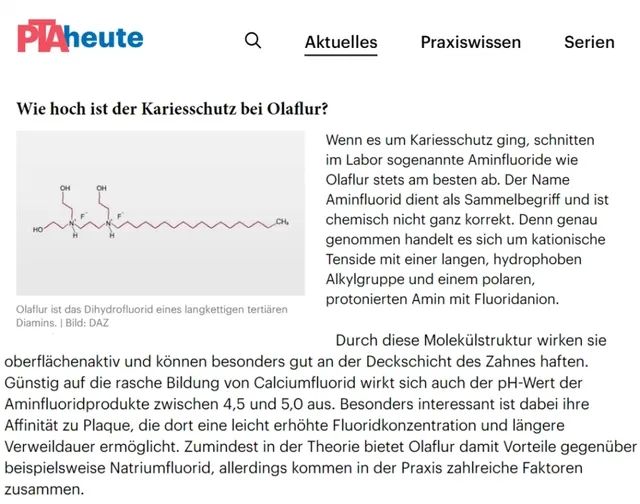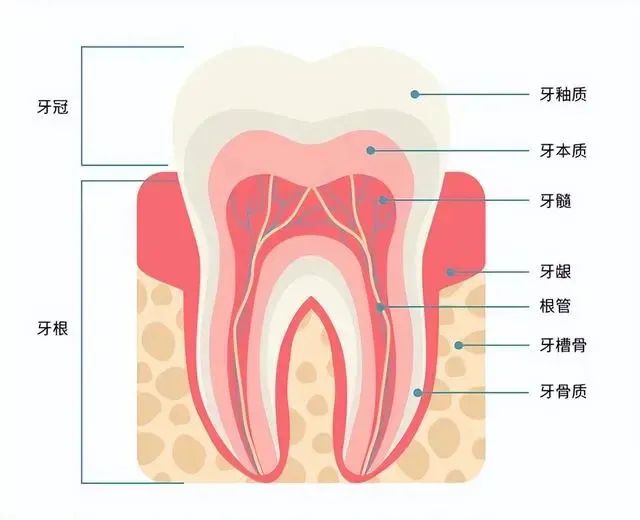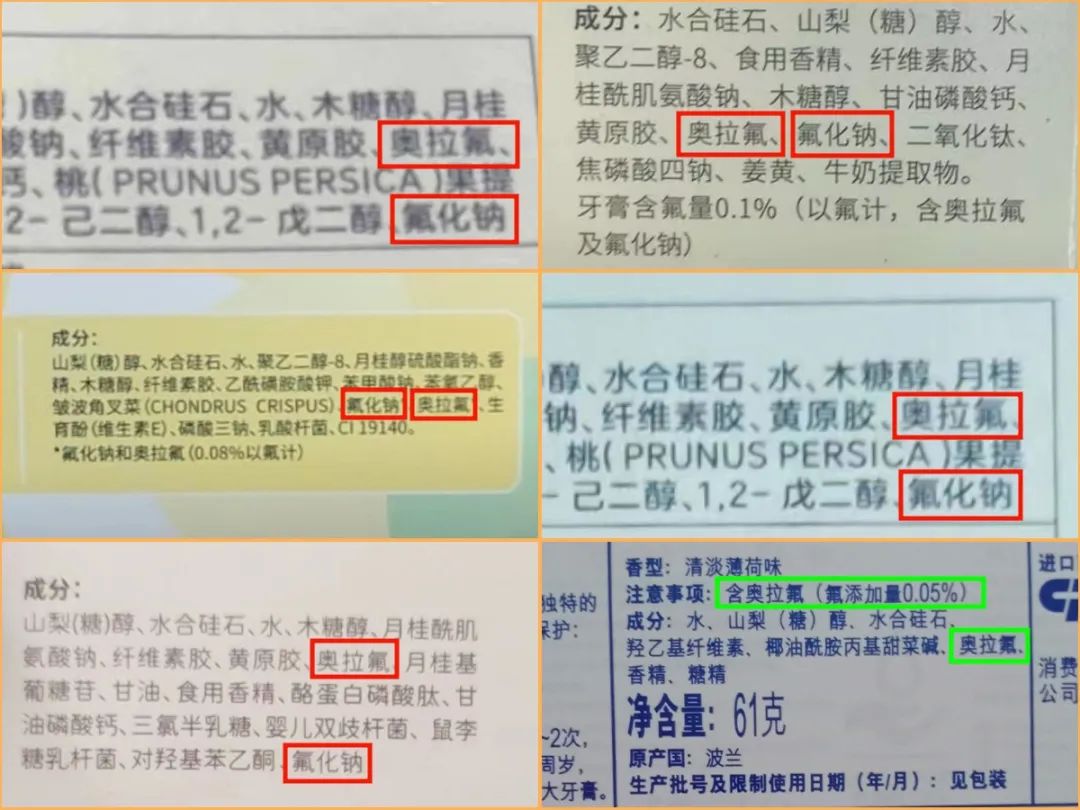Olafur - The Secret of Dental Health
Background
With age, having healthy teeth will be a very happy thing. However, with the progress of society, the improvement of living standards, and the highly enriched diet, many oral health problems have emerged, among which the prevention and treatment of dental caries is the most concerned by society.
Caries is the most common oral disease that affects human dental health. It is currently considered a dynamic process in which teeth alternate between demineralization and remineralization stages through the action of calcium, fluoride, and phosphorus present in saliva. Therefore, it is considered as a mineral imbalance in biofilm fluid, leading to dental diseases.
At present, once dental caries occurs, it is difficult to restore teeth to their pre disease state through later treatment. The most effective method is to take preventive measures. Scientific research shows that fluoride can reduce the demineralization rate by forming fluorohydroxyapatite and enhancing the remineralization rate of teeth, so as to prevent dental caries.
Currently, countries such as the United States, Canada, and Australia directly add fluoride to drinking water to achieve the goal of universal prevention of dental caries. However, due to the fact that fluoride can also be ingested through foods such as sesame, taro, kelp, cod, tea, etc., it may ultimately lead to excessive fluoride intake, causing fluoride plaque, and even fluorosis. Therefore, most countries around the world, including China, explicitly prohibit the addition of fluoride to drinking water. However, the improvement of living standards and people's strict pursuit of drinking water and diet often lead to insufficient fluoride intake for most people, leading to the occurrence of dental caries. Later research found that adding an appropriate amount of fluoride directly to toothpaste, mouthwash, and other dentifrice products can effectively prevent dental caries.

Application of fluoride in oral products
At present, various types of local fluorides commonly found in the market include sodium fluoride, sodium monofluorophosphate, stannous fluoride, and acidified fluorinated phosphate. All these fluorides are inorganic in nature and are obtained in the form of solution, foam, gel, dentifrice, etc. The concept of adding fluorine to products is single, and the competition for product homogeneity is severe, making it difficult to elevate the high-end image of the product.
Olafur, an organic fluoride, is a novel fluoride additive. At present, there is little competition in the market, and the main application ends include high-end dental products such as Elmex from Switzerland and Lacalut from Germany, which are healthy partners for teeth.
Olafur>Sodium monofluorophosphate>Sodium fluoride
Advantages of Olafur
1. Olafur is an organic fluoride, providing a more stable fluoride supply.
2. Olafur is an organic amino fluoride, with one end being a polar water-soluble amino group and the other end being a non-polar fatty acid fluorine. This results in excellent surface activity of olafloxacin, which not only has good solubility and decontamination ability, but also its amino end can accumulate on the surface of teeth, and the fluorine end is outward, which is more conducive to the release and contact of fluorine and helps to remineralize, effectively protecting enamel.
3. The amino surface activity of olafloxacin enhances the cleaning effect of dentifrices, helping to disperse dental plaque. At the same time, the surface activity makes it easy to adhere to the cleaned tooth surface, hindering bacterial adhesion, and better inhibiting the formation of dental plaque.
4. Fluoride can interfere with bacterial enzyme metabolism, reduce the organic acids produced by oral bacteria metabolism, and reduce the corrosion of organic acids on enamel. However, conventional inorganic fluorides are not easy to penetrate cell membranes. Olafur, due to its amino surface activity and organic fatty acid terminal, can effectively penetrate cell membranes and interfere with metabolism, thereby inhibiting the production of organic acids.
How to choose fluoride toothpaste
From the perspective of preventing dental caries, fluoride toothpaste has been fully recognized in the field of dentistry, and brushing teeth with fluoride toothpaste is recognized as a safe and effective caries prevention measure.
It should be known that dental caries (i.e. tooth decay and worm tooth) is the most common oral disease among children, and its incidence rate ranks first among children's common diseases. According to the results of the national oral health epidemiological survey, the caries rate of 3-year-old children in China exceeds 50%, and the caries rate of 5-year-old children exceeds 70%.
After the occurrence of dental caries, it can cause pain, decreased chewing ability, asymmetric facial development, and may further lead to secondary diseases such as pulpitis and jawbone inflammation.
Fluoride toothpaste can effectively prevent dental caries and reduce the incidence rate of dental caries. Related studies have shown that compared to fluoride free toothpaste, brushing teeth twice a day with fluoride toothpaste can prevent 23% to 24% of dental caries.
The anti caries principle of fluoride toothpaste, in simple terms, is that bacteria in the oral cavity ferment with food residue (carbohydrates) to produce acid, which continuously dissolves dental enamel and over time forms caries. Fluorine can reduce the dissolution of dental enamel by acid, make the dissolved enamel stronger and more acid resistant, and also inhibit the proliferation of cariogenic bacteria.
Some fluorine-free toothpastes on the market claim that without adding fluorine, they can also achieve caries prevention effects through ingredients such as xylitol, bioactive glass, and herbs. However, according to existing research, compared to fluoride, the anti caries ability of these components is not significant.
In summary, fluoride plays an important role in preventing dental caries. It is recommended to use children's fluoride toothpaste to brush teeth from the moment the baby's teeth are exposed.
Currently, there are not many children's toothpastes available for use with Orafloxacin on the market.
According to relevant research reports by PTAheute in Germany, olafloxacin has better caries prevention experimental performance compared to other fluorides.

This is because olafloxacin belongs to the hydrogen fluoride of ammonia, which has both hydrophobic and hydrophilic components. This special surface activity makes it more difficult to be washed away by saliva and can better adhere to the surface of each tooth, forming a uniform "fluoride film" to protect teeth.
In addition, the pH value of Olafur aqueous solution is relatively lower (around 4.5-5.0), which makes fluoride ions more easily absorbed by enamel and retained for a long time, making it more conducive to enamel remineralization.
So, if the baby's dietary or oral hygiene habits are not good and the risk of dental caries is higher than other children, then choosing a children's toothpaste with Olafur added will be more ideal for preventing dental caries.

Under the same fluoride content, pure Olafur toothpaste can better utilize the characteristics and caries prevention advantages of Olafur itself, making it a relatively better choice.

It can be seen that only a small number of toothpastes use Olafur as the sole source of fluoride, and most products not only contain Olafur, but also contain a mixture of sodium fluoride or sodium monofluorophosphate.
含氟牙膏安全性
Many parents talk about fluoride discoloration and believe that toothpaste containing fluoride is not good.
Don't think so!
The guidelines for oral health of Chinese residents pointed out that "fluoride toothpaste has obvious moth prevention effect", and the Chinese Stomatological Association also pointed out in the Guidelines for the Prevention and Treatment of Caries in Infants and Young Children that "after the eruption of the first deciduous tooth, it is advisable to use fluoride toothpaste to brush the teeth of children".
It can be said that toothpaste does not contain fluoride=ineffective brushing=ineffective cavity prevention.
Research experiments have shown that children need to swallow more than 200g of toothpaste in one breath (equivalent to consuming four toothpaste tubes at a time) in order to have the possibility of developing fluorosis.
So even if the baby accidentally swallows the toothpaste, as long as the fluoride content in the toothpaste is within the national standard of 0.05-0.11%, it will not cause health hazards.



